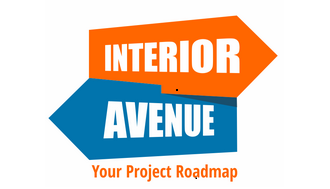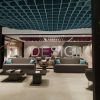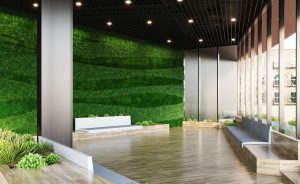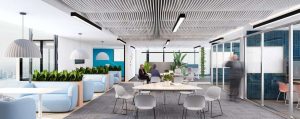The Truth About Open Offices and the Drawbacks
Guest post by Ethan Bernstein & Ben Waber, HBR
FROM THE NOVEMBER–DECEMBER 2019 ISSUE
It’s never been easier for workers to collaborate—or so it seems. Open, flexible, activity-based spaces are displacing cubicles, making people more visible. Messaging is displacing phone calls, making people more accessible. Enterprise social media such as Slack and Microsoft Teams are displacing watercooler conversations, making people more connected. Virtual-meeting software such as Zoom, GoToMeeting, and Webex is displacing in-person meetings, making people ever-present. The architecture of collaboration has not changed so quickly since technological advances in lighting and ventilation made tall office buildings feasible, and one could argue that it has never before been so efficient. Designing workplaces for interaction between two or more individuals—or collaboration, from the Latin collaborare, meaning to work together—has never seemed so easy.

But as the physical and technological structures for omnichannel collaboration have spread, evidence suggests they are producing behaviors at odds with designers’ expectations and business managers’ desires. In a number of workplaces we have observed for research projects or consulting assignments, those structures have produced less interaction—or less meaningful interaction—not more.
In this article, we discuss those unintended consequences and provide guidance on conducting experiments to uncover how your employees really interact. That will help you equip them with the spaces and technologies that best support their needs.

The Architecture and the Anatomy of Collaboration
Workers are surrounded by a physical architecture: individual offices, cubicles, or open seating; a single floor, multiple floors, or multiple buildings; a dedicated space for the organization, a space shared with other companies, or a home office. That physical architecture is paired with a digital architecture: email, enterprise social media, mobile messaging, and so forth.
But although knowledge workers are influenced by this architecture, they decide, individually and collectively, when to interact. Even in open spaces with colleagues in close proximity, people who want to eschew interactions have an amazing capacity to do so. They avoid eye contact, discover an immediate need to use the bathroom or take a walk, or become so engrossed in their tasks that they are selectively deaf (perhaps with the help of headphones). Ironically, the proliferation of ways to interact makes it easier not to respond: For example, workers can simply ignore a digital message.
When employees do want to interact, they choose the channel: face-to-face, video conference, phone, social media, email, messaging, and so on. Someone initiating an exchange decides how long it should last and whether it should be synchronous (a meeting or a huddle) or asynchronous (a message or a post). The recipient of, say, an email, a Slack message, or a text decides whether to respond immediately, down the road, or never. These individual behaviors together make up an anatomy of collaboration similar to an anthill or a beehive. It is generated organically as people work and is shaped by the beliefs, assumptions, values, and ways of thinking that define the organization’s culture.

Architecture is easy to observe—you just look at blueprints, models, technology, or the space around you. Until recently the anatomy of collaboration was hard to observe. But technology has made it possible to detect and analyze the flows of communication.
Sensors are all the rage. Sensors in chairs measure how long workers are at their desks. Sensors in the floor measure when and how they move. Sensors in RFID badges and smartphones track where they go. Sensors (in the form of video cameras) track whom they are with. Panasonic has added WiFi sensors to lighting systems, which can monitor face-to-face interactions across entire buildings and workplaces.
When the firms switched to open offices, face-to-face interactions fell by 70%.
Another way to detect interactions is by collecting the digital “breadcrumbs” people leave when they book a meeting, send an email, open a browser window, post on Slack or Teams, or make a call, thanks to systems designed to save communication metadata. Increasingly, employers can use advanced analytics tools to study that data to understand employees’ collective behaviors. Algorithms that assess workers’ movements and interactions can learn to distinguish collaboration from mere copresence. Ones that analyze workers’ past behaviors can learn to predict their next moves, individually and collectively, and estimate the probability of a valuable collision between people.

These advances have allowed us to confirm something many people have suspected: Collaboration’s architecture and anatomy are not lining up. Using advanced wearables and capturing data on all electronic interactions, we—along with Stephen Turban, one of Ethan’s former students, who is currently at Fulbright University Vietnam—tracked face-to-face and digital interactions at the headquarters of two Fortune 500 firms before and after the companies transitioned from cubicles to open offices. We chose the most representative workplaces we could find; we waited until people had settled into their new spaces to track their postmove interactions; and, for accuracy, we varied the length of time over which we tracked them. With the first company, we collected data for three weeks before the redesign, starting one month prior, and for three weeks roughly two months after it. With the second, we collected data for eight weeks before the redesign, starting three months prior, and for eight weeks roughly two months after it. We aligned our data-collection periods with seasonal business cycles for apples-to-apples comparisons—for example, we collected data during the same weeks of the quarter. We found that face-to-face interactions dropped by roughly 70% after the firms transitioned to open offices, while electronic interactions increased to compensate.
Why did that happen? The work of the 18th-century French philosopher Denis Diderot suggests an answer. He wrote that performers should “imagine a huge wall across the front of the stage, separating you from the audience, and behave exactly as if the curtain had never risen.” He called this the fourth wall. It prevents actors from being distracted by the audience and allows them to divorce themselves from what they cannot control (the audience) and focus only on what they can (the scene), much as a basketball player shoots the ball without really seeing the cheering (or booing) fans behind the hoop. It creates the intimacy of what some call public solitude. The larger the audience, the more important the fourth wall.

People in open offices create the fourth wall, and their colleagues come to respect it. If someone is working intently, people don’t interrupt her. If someone starts a conversation and a colleague shoots him a look of annoyance, he won’t do it again. Especially in open spaces, fourth-wall norms spread quickly.
Proximity Matters
A separate finding of our and others’ research is that team members’ location has a big impact on both their physical and their digital interactions. In general, the farther apart people are, the less they communicate. Research that one of us (Ben) was involved in at the MIT Media Lab shows that the probability that any two people on a corporate campus will interact physically or digitally is directly proportional to the distance between their desks. More broadly, one of the most robust findings in sociology—proposed long before we had the technology to prove it through data—is that propinquity, or proximity, predicts social interaction.
Consider a study conducted at the headquarters of a major consumer products company by Humanyze, an organizational analytics software firm headed by one of us (Ben) that helps companies understand how their teams interact. It found that people on the same team were six times as likely to interact if they were on the same floor, and people on different teams were nine times as likely to interact if they were on the same floor. A study we conducted at the main campus of a Fortune 500 retailer with more than a dozen buildings showed that just 10% of all communications occurred between employees whose desks were more than 500 meters apart. These findings suggest that locating people in proximate buildings won’t improve collaboration; to increase interactions, workers should be in the same building, ideally on the same floor.
And remote work, while undeniably cost-effective, tends to significantly inhibit collaboration even over digital channels. While studying a major technology company from 2008 to 2012, we found that remote workers communicated nearly 80% less about their assignments than colocated team members did; in 17% of projects they didn’t communicate at all. The obvious implication: If team members need to interact to achieve project milestones on time, you don’t want them working remotely.

Nourish an Anatomy of Collaboration
Since publishing academic articles on the offices we’ve studied, we have been asked for more details about those spaces. Some people seem to believe that a better blueprint could solve the collaboration conundrum. Architects, property managers, and manufacturers of office systems reinforce that view by using data from employee surveys and prior space utilization to identify individual needs and building “flexible,” “agile,” “activity based” spaces to allow workers to craft their own spaces to suit them. But collaboration is a team sport. Offices that are overly focused on supporting individual preferences are unlikely to do an optimal job of supporting the overall team or the collection of teams that need to work together. So hybrid open-office designs are not a panacea. If you are going to let people choose the spaces that best meet their individual needs, your workers might as well be remote.
Leaders need to make the call about what collective behaviors should be encouraged or discouraged and how. Their means should include not just the design of workspace configurations and technologies but the design of tasks, roles, and culture as well.
If keeping real estate costs in check is the priority, leaders should be honest about that with themselves and their employees. Most office redesigns aren’t undertaken to promote collaboration. They start with objectives like the one described by the head of real estate at a Fortune 50 company: “The leadership team has just given me a mandate to restack our headquarters to fit another 1,000 employees in here.” Tremendous progress has been made designing offices that can accommodate more people in a given space. That’s not necessarily a bad thing: Companies often reinvest the resulting savings in important ways.
A Return to Tight Quarters
During much of the 1990s, organizations hired employees faster than they expanded their offices. With layoffs in the early 2000s recession, and again in 2008, surviving workers regained some space, largely because companies held long-term leases and were loath to invest in office reconfigurations. But as hiring rebounded, leases came due, and redesign budgets recovered, organizations again began fitting their people into smaller and smaller spaces.

If the aim really is to boost collaboration, you need to increase the right kinds of interactions and decrease ineffective ones. You’ll have to carefully choose your trade-offs. That means you need to understand current patterns of interaction and consider how you want to change them. Using sensors and digital data to track interactions at a large German bank, MIT researchers found that in cases where intrateam cohesion was more predictive of productivity and worker satisfaction than cross-team collisions were, increasing interactions between teams undermined performance. So they moved teams into separate rooms. And after using Humanyze technology to track interactions, a major energy company decided to increase communication between departments that had strong process dependencies and reduce communication between other departments by colocating some in a new building and moving others offsite.
If people need uninterrupted time to focus, distractions are costly. When that’s the case, creating more opportunities for collaboration can amplify the cost without providing a corresponding benefit.
Conduct Real Experiments
The best way to find the optimal workplace design for particular groups is to run rigorous experiments. That means collecting and analyzing data on interactions, developing a hypothesis about how to improve them, and testing your hypothesis against a control group. Mori Building, one of the largest property management companies in Japan, did this in early 2016 when it sought to create more-productive collaboration among the teams in its corporate headquarters. The office architecture was open, but by using wearable sensors (some of which were supplied by Humanyze) to track face-to-face interactions, Mori discovered that employees largely communicated only with those on their own team. People generally stayed in their team’s reserved seating area and rarely ventured into the open seating areas—which accounted for some 20% of the space.

So Mori’s building-environment-development division staged an experiment to see whether it could influence anatomy with architecture. It chose a corporate floor on which seating was arranged by team (interior design, real estate consulting, sales, and so on). Part of the space remained the same (the control group), and part was turned into “free address” space—open seating, with no desk assignments. When Mori measured face-to-face interactions in that configuration, the results were clear: Although interactions between teams increased, those within teams fell drastically, with people spending 1.26 times as much of their day working in isolation.
Mori was initially pleased with the results. The rise in cross-team interactions meant that people were going directly to others to resolve issues and get things done—bypassing managers, whom the data had revealed to be “communication bottlenecks.” And although this was an unintended consequence, the reason people spent more time on solo work was that meetings lasting 30 minutes or longer diminished (people just found one another when they needed to talk). But there was a dark side: It turned out that managers were not only communication bottlenecks but also gatekeepers of quality. In bypassing them, workers caused problems downstream; within six months, productivity had dropped and client complaints had risen. And although the reduction in meeting time seemed beneficial, in retrospect it seemed that those who gained more solo work time would have produced better work, more efficiently, if they had attended more meetings to receive guidance, while employees who had relied on meetings to ensure an orderly way of dealing with issues now felt burdened by people coming to them on a whim (until they began hiding out in the coffee shop downstairs). In the end, Mori went back to fixed seating by team and reduced the amount of open space.
By conducting similar experiments, a major software company discovered that 90% of face-to-face interactions took place at people’s desks. Just 3% occurred in common areas (the rest took place in meeting rooms). The company had been planning to move to free-address seating to increase interactions among teams, but it realized that would be highly disruptive to collaboration and abandoned the plan.

Such experiments require time and money, but many organizations find the costs trivial in view of the benefits generated by what they learn. Obviously, it pays to experiment with designs if a company is intending an overhaul to its space like the one GlaxoSmithKline (a Humanyze client) is planning at its corporate headquarters in London. Executives were considering a new office format and decided to build one small portion of it as a pilot, which they call their workplace performance hub. The firm invited academic partners in architecture and behavioral science to help design experiments in the space. It will soon have rotated two teams through the pilot space—one did so during the first nine months of 2019, and a second is being planned as we write this—tracking (relative to a control group) measurements that include steps, heart rate, blood pressure, respiratory rate, lung function, posture, well-being, collaboration, and performance (using everything from wearable devices and Kinect sensors to surveys and traditional performance-management systems). GSK is drawing on this data to tweak all aspects of the space—lighting, temperature, aroma, air quality, acoustic masking, ergonomics, and design—to help its people do (and interact) more by making the space respond to employees’ needs, whether professional or physiological.
A major U.S. financial institution tested dozens of floor designs at various regional offices. It chose the one that created the collaboration and focused-work patterns that best matched its goals and rolled it out across the organization. The cost was not trivial; it amounted to millions of dollars. But the firm was far better off than if it had picked a design without running experiments and subsequently discovered that it had wasted hundreds of millions of dollars on an ineffective configuration.

Just as high-frequency A/B testing is common in marketing and sales, rapid experimentation is key to workplace design. Before it adopted that approach, a major energy company spent seven years and approximately $10 million in design and consulting fees to plan a new office building. Today it can roll out a new plan in six months for about $500,000—quantifying the behaviors it wants to encourage, building out one floor of an existing office as a test, and confirming or disproving its hypothesis that the design will prompt those behaviors. That sounds impressive, but keep in mind that you need to experiment long enough to understand all the dynamics in play. As Mori discovered, initial results can be misleading.
When conducting such experiments, you need to consider the privacy implications of collecting the necessary data. Email and especially sensor metadata is sensitive. In addition to questions about the legality of amassing such information, which depends on local laws and regulations, there are ethical concerns. Companies should be transparent about what data they are collecting and sensitive to employees’ feelings about who owns it—the employee, who provides the raw inputs through his or her interactions, or the organization, which gathers, organizes, processes, and stores those inputs. Companies that ignore or downplay those concerns risk alienating workers and incurring significant reputational damage (see “The Happy Tracked Employee” on HBR.org). Those that transparently demonstrate that their use of the data is limited and is intended to benefit workers may find room for open collaboration with employees to create even better workplace designs.
Less Can Be More
Optimizing collaboration doesn’t have to entail a radical overhaul of office space; tweaks can make a difference, and it pays to test their potential impact. Mori is now collecting data about what size the tables in its corporate headquarters should be. Its initial conclusion: Large tables, prescribed by many new office designs in place of individual desks, are about as good at fostering intimate conversations as expansive dining-room tables are—in other words, not good at all. A manufacturing company found that small changes to furniture can have a big impact. Its headquarters had two types of meeting spaces in the main work areas: ones that were totally open and ones with movable whiteboard barriers on two sides. Over 50% more interactions occurred in the whiteboard areas. Adding more whiteboards was a trivial expense.

Sometimes the best answer doesn’t involve changes to the physical structure. Experiments showed Mori that events deliberately designed to achieve particular interactions between specific individuals and teams had a more precise and valuable impact on interaction patterns than did changes to the office space. Those events can be internal workshops, hackathons, or even barbecues, as long as interactions are measured, using sensors, to show whether the desired patterns emerged. To help integrate new hires during their first week on the job, a midsize technology company puts jars of cookies on their desks and posts a map in the lobby showing the jars’ locations, to encourage people to stop by. Humanyze discovered that the location of its coffee machines significantly influences interactions. If a team needs to focus internally, the company puts a coffee machine in the center of its area. If two teams need to collaborate, it puts the machine between them.
These “software” approaches to architecture can do a lot at a very low price. All that’s needed is a little more collaboration among real estate professionals, HR, and the users of the space. Organizations that get this right typically have a single executive—say, the chief human resources officer or the chief administrative officer—overseeing both HR and real estate.
CONCLUSION
A single best physical or digital workspace architecture will never be found. That’s because more interaction is not necessarily better, nor is less. The goal should be to get the right people interacting with the right richness at the right times.

Many common assumptions about office architecture and collaboration are outdated or wrong. Although the open-office design is intended to encourage us to interact face-to-face, it gives us permission not to. The “accidental collisions” facilitated by open offices and free spaces can be counterproductive. In many instances, “copresence” via an open office or a digital channel does not result in productive collaboration.
Technological advances allow us to test assumptions and understand how groups of workers really interact. The hard data required to prove or disprove theories can be obtained and analyzed. For that to occur on a large scale, the HR, real estate, and finance functions need to embrace the experimentation that has infused marketing and operations. When that happens, physical and virtual workplace design can become a continuous process—one that gives the architecture and the anatomy of collaboration a happy place to meet.
A version of this article appeared in the November–December 2019 issue of Harvard Business Review.
Reach out today for your Project Roadmap.
Our Roadmap will give you a layout, 3D rendering, and a budget.








Leave a reply